Research on Fire! Fire Tablets Increase Student Pride and Confidence in Research
Contents
Introduction
In this case study, readers will learn about the racial disparity in graduate school programs in psychology and how tablets have been used to increase excitement and motivation in students. Readers will learn how we used Amazon Fire tablets to increase confidence and pride in Research Methods and Statistics students. Furthermore, readers will learn that we were able to significantly increase students’ confidence and pride in their research. Our students reported that the tablets convinced them they were capable of conducting research. They will learn the impact that it had in a research methods classroom.
Objectives
- After completing this case study, participants will be able to determine if using Amazon Fire tablets will be a useful tool to increase pride and confidence in research for your students.
- After completing this case study, participants will learn how to use Amazon Fire tablets in a Research Methods and Statistics classroom.
- After completing this case study, participants will learn the pros and cons of using Amazon Fire tablets in the classroom.
UDL Alignment
This case study aligns well with the Universal Design for Learning (UDL). In regard to providing Multiple Means of Representation, using Amazon Fire tablets for Research Methods projects provides students with support for decoding mathematical notation. By using Qualtrics (a user-friendly website for survey development/data collection – quite a few universities, over 2000 in 90 countries, already have subscriptions to Qualtrics) with the Amazon Fire tablets, students are unburdened with the data entry process into SPSS (data is automatically downloaded into an SPSS file) and can instead spend more time learning the analyses that they need to conduct to find support (or not) for their research hypotheses. Therefore, these tablets are helping students overcome barriers to knowledge and skill acquisition in research methods and statistics. Our students were now freed up to focus more on the “big ideas” (e.g., interpreting statistical output) rather than improving specific data entry skills that may not be used post-graduation.
My teaching intervention also provides Multiple Means of Action and Expression. Students are using a new communication method when they use the tablets to collect their data in lieu of paper and pencil method. By using Qualtrics on the tablets, they have a new way to manage their data. Qualtrics provides students a new technology to collect their data and provides the SPSS dataset ready for them to analyze. Previously they would have needed to hand-enter their data, further delaying the data analysis and interpretation process. Managing date abecomes easier and in a format that our newest generations can more easily navigate. Modern students are not as well adapted to competing assignments using paper and pencil; more often, they are much more accustomed to completing assignments on their phones, tablets, and laptops. Therefore, by collecting data with these Amazon Fires tablets in Qualtrics, students will improve their digital literacy. Indeed, they will become literate in two new digital resources: Amazon Fires and Qualtrics. By providing them with these new means to collect data, these skills should also make them more attractive candidates for employment and graduate school.
The results of this study also show that the tablets provide Multiple Means of Engagement. Students reported more confidence and pride as a result of using the tablets – a demonstration of a sense of autonomy. Additional results from this research suggested the tablets also motivated students to learn the course material. Thus, this teaching intervention may promote beliefs that optimize motivation as well.
Instructional Practice
Currently, only 5% of doctoral graduates in psychology identify as Black or African American (APA, 2007) and this percentage must nearly triple to achieve equal representation (US Census, 2010). To reduce this disparity, the introduction of technology into the research methods classroom, a well-established teaching intervention to increase student interest (e.g., Kinash, Brand, & Mathew, 2012), may help. Introducing technology into the classroom offers students and alternative for action and expression in the classroom, a new way for them to engage in the coursework, and a mean for representation by exposing them to new technological formats. One particular technological intervention, providing students with iPads, appears to excite students about research and motivates students to learn (e.g., Rossling, Miller, Cecil, & Stamper, 2012). However, iPads are expensive; the starting price for iPads is currently $329. Most colleges cannot afford to provide such expensive technology to their students. Fortunately, Amazon Fire tablets offer similar features as iPads, at a fraction of the price (currently, $49.99). Please see the table below to compare some of the primary features of the Fire tablets and iPads.
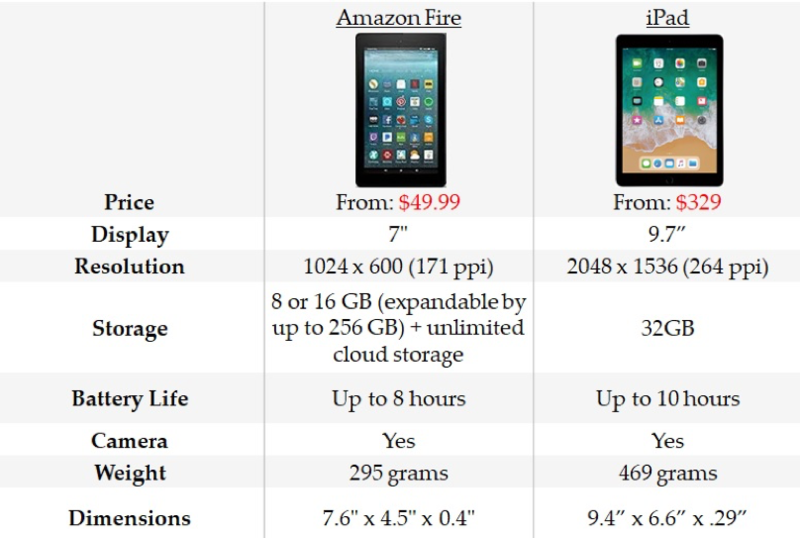
Figure 1: Comparison of various features of the Amazon Fire tablet vs. iPads
We predicted that providing students with Amazon Fire tablets to use for their research projects would increase their confidence and pride in their research projects.
To test this prediction, we recruited Winston-Salem State students in person, who mostly identified as African-American or Black, enrolled in Research Methods and Statistics I and II courses (N = 19). During class time, students were provided consent forms, Amazon Fire tablets, and instructions on how to use them. A template in Qualtrics was provided to students to ease their way into this new way to collect data. Students simply needed to copy and paste their consent forms and survey questions into the template provided. The instructors provided additional assistance and guidance to students as needed (generally, students figured out how to set up their students quickly because Qualtrics is quite intuitive, especially when a template is provided). Critically, the instructors were not experts in Qualtrics, but were knowledgeable about the basics: how to add questions, change how participants can respond to questions, etc. This appeared to be sufficient to get students to create their studies in Qualtrics. When needed, Qualtrics also offeres chat and phone support for bothe students and professors. To being learning about Qualtrics,please watch the 10 minute video below, figure 2, to gain the same knowledge that our instructors had about Qualtrics when we started this study.
Here is a picture of my current Qualtrics account:
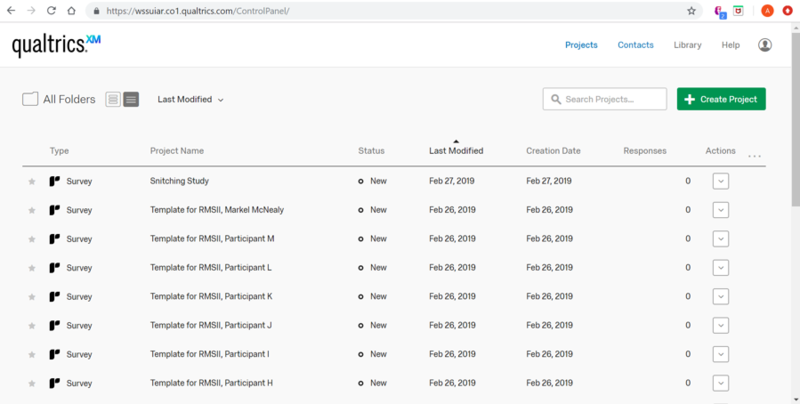
Figure 2: Screenshot of Instructors Qualtrics Account
I created a template for my research assistant, Markel McNealy, who was not a participant in this study. His template includes a sample informed consent and Likert scale question. Students simply type their own consent forms/questions in place of the “dummy” templates/questions.
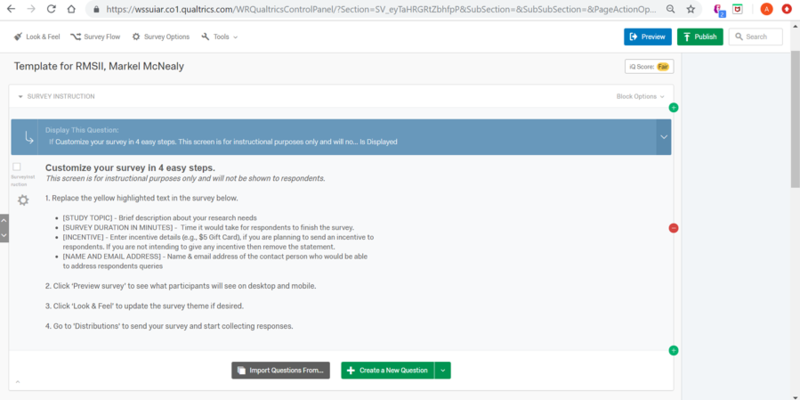
Figure 3: Template includes a sample informed consent and Likert scale question for research assistant
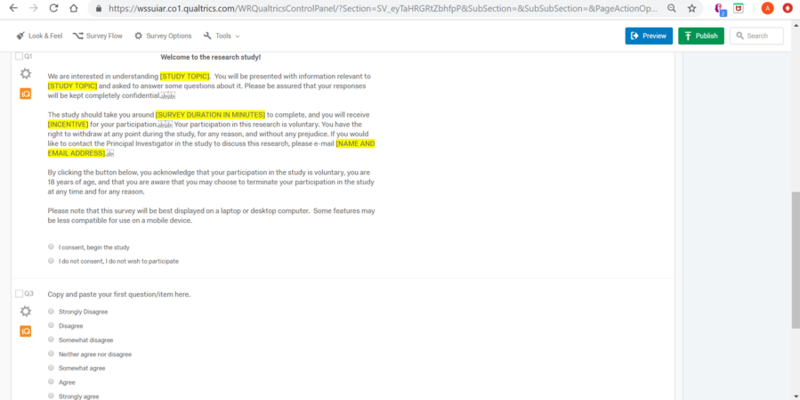
Figure 4: Template includes a sample informed consent and Likert scale question for research assistant
Students used a link under the distributions tab to collect their data.
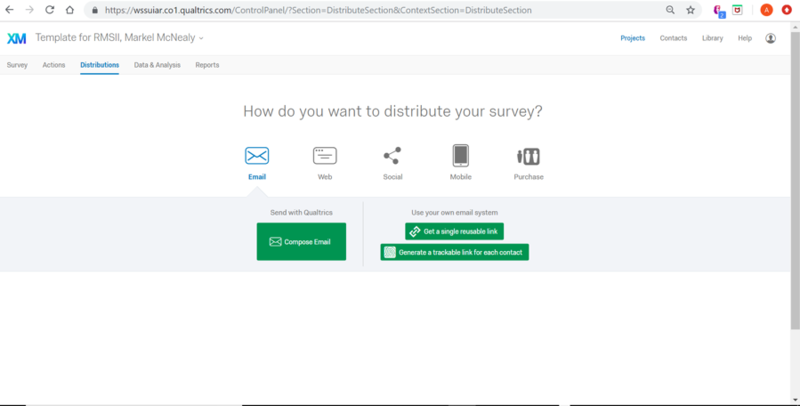
Figure 5: Screenshot of link under the distributions tab students used to collect data
Qualtrics provided participants with an SPSS file of their data once data collection was complete. They would click “export” under the Data & Analysis tab.
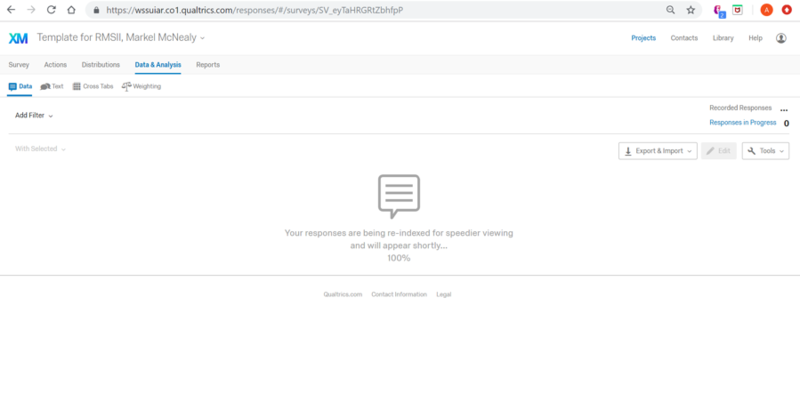
Figure 6: Screenshot of SPSS file once data collection was complete
Prior to using their tablets, participants reported, on a 7-point scale, their responses to the following questions:
| How motivated are you to learn about psychological research? | How capable are you in conducting psychological research? |
| How enthusiastic are you to learn about psychological research? | How much fun is psychological research? |
| How interested are you in psychological research? | How likely are you to apply for graduate school? |
| How confident are you in your research abilities? | How much do you want to study research in graduate school? |
| How much pride do you have in your research skills? | How likely are you to consider pursuing a career that involves psychological research? |
Approximately two weeks later, after participants finished collecting their data with the tablets, they responded to the above questions again along with the following questions on a 5-point scale:
| The Amazon Fire helped me learn about psychological research. | Because of the Amazon Fire, I am excited about psychological research. |
| The Amazon Fire helped me develop confidence in my research skills. | Using the Amazon Fire made me interested in studying research in graduate school. |
| The Amazon Fire helped me develop skills that apply to my future career. | Using the Amazon Fire increased my enthusiasm for psychological research. |
| The Amazon Fire motivated me to learn the course material more than class activities that did not use the Amazon Fire. | Using the Amazon Fire convinced me that I am capable of conducting research studies in psychology. |
| Using the Amazon Fire helped give me pride in my research study. | Using the Amazon Fire made psychological research fun. |
Afterward, the tablets were collected, and participants were thanked for their participation.
Using a repeated measures design, our results suggest that students felt significantly more confidence and pride in their research projects than they did prior to receiving the tablets, ps < .05. Furthermore, our participants responded to all questions about the Amazon Fire above three, the midpoint (see Table 1 below, all Ms > 3.50). Of particular interest, our students reported feeling especially capable of conducting research studies in psychology because of the Amazon Fire (M = 4.21, SD = 1.03, 5-point scale). These results suggest that using Amazon Fire tablets may be a particularly impactful tool to increase students’ confidence and pride in their research projects and will lead students to realize that they are quite capable at conducting research in psychology Furthermore, these findings indicate that by providing students with a new mean of representation (Amazon Fires are a new learning format for most students), and a new mean of engagement, (Amazon Fire with Qualtrics allow students to engage their participants in a more modern and technological manner than paper and pencil), our students feel more capable of conducting research. This has important implications for their ability to earn research-realated employment and entrance into graduate school. Indeed, we provided our student’s with skill sets needed to do well in both.
There were several advantages to using the tablet in the classroom. Students reported that people were more likely to participate, collecting data was much easier than with the paper method, and they greatly appreciated that the data was automatically entered into an SPSS file. Clearly, using these tablets removed several barriers for students’ data collection. In classes prior to our study, students often complained about the cost of making copies of consent forms and questionnaires, carrying around these forms around campus to collect data (which can be quite heavy), and entering their data by hand into SPSS. By removing these barriers to conducting research, more time can be spent with students to explain what their data means, what their statistical analyses mean, and more time thoughtfully writing their scientific papers based on their data collection. The primary student complaint about the tablets was wi-fi problems, which are outside of faculty control. A campus with reliable wi-fi would be able to successfully avoid this problem. In addition, there is a setting in Qualtrics to collect data offline when necessary.
| M | SD | |
|---|---|---|
| The Amazon Fire helped me learn about psychological research. | 3.84 | 1.26 |
| The Amazon Fire helped me develop confidence in my research skills. | 3.72 | 1.27 |
| The Amazon Fire helped me develop skills that apply to my future career. | 3.83 | 1.34 |
| The Amazon Fire motivated me to learn the course material more than class activities that did not use the Amazon Fire. | 4.00 | 1.20 |
| Using the Amazon Fire helped give me pride in my research study. | 4.05 | 1.08 |
| Because of the Amazon Fire, I am excited about psychological research. | 3.89 | 1.05 |
| Using the Amazon Fire made me interested in studying research in graduate school. | 3.53 | 1.12 |
| Using the Amazon Fire increased my enthusiasm for psychological research. | 3.78 | 1.06 |
| Using the Amazon Fire convinced me that I am capable of conducting research studies in psychology. | 4.21 | 1.03 |
Learn More
Links to Tablets for Purchase
This website shows the Amazon Fire tablets we purchased for this study.
This website shows the cases we bought for the Amazon Fire tablets
This YouTube video will help people learn how to use Qualtrics. This video includes the necessary knowledge to create a study.
References & Resources
Kinash, S., Brand, J., & Mathew, T. (2012). Challenging mobile learning discourse through research: Student perceptions of Blackboard mobile learn and iPads. Australasian Journal of Educational Technology, 28, 639-655.
Maton, K. I., Kohout, J. L., Wicherski, M., Leary, G. E., & Vinokurov, A. (2006). Minority students of color and the psychology graduate pipeline: Disquieting and encouraging trends, 1989-2003. American Psychologist, 61, 117-131.
O’Brien, L.T., Blodorn, A., Adams, G., Garcia, D. M., & Hammer, E. (2015). Ethnic variation in STEM participation: An intersectional approach. Cultural Diversity and Ethnic Minority Psychology, 21, 169-180.
Rossing, J. P., Miller, W. M., Cecil, A. K., & Stamper, S. E. (2012). iLearning: The future of higher education? Student perceptions on learning with mobile tablets. Journal of the Scholarship of Teaching and Learning, 12, 1-26.
Tucker, E. A., & Tucker, T. C. (2016, October 31). Diversity in the psychology workforce: Challenges and opportunities to increase the presence of African-American males in psychology graduate programs. Retrieved from https://www.nationalregister.org/pub/the-national-register-report-pub/the-register-report-spring-2015/diversity-in-the-psychology-workforce-challenges-and-opportunities-to-increase-the-presence-of-african-american-males-in-psychology-graduate-programs/
About the Author

Amber DeBono
As a first generation college student, Amber DeBono earned her B.A. in Psychology at the University of Arizona. While earning her Ph.D. in Social Psychology at the University at Albany, she researched the impact of social exclusion and religious beliefs on immoral and anti-social behaviors.
During her doctoral program, she taught courses at Schenectady Community College and at the University at Albany, State University of New York. She was a Visiting Assistant Professor at the University of Bridgeport during her last semester in her doctoral program. Now, she is an Associate Professor at Winston-Salem State University where her primary courses include: Introduction to Psychological Sciences, Research Methods and Statistics, and Social Psychology.
Dr. DeBono has presented award-winning research at several conferences for the Society for Personality and Social Psychology. She published her research in high-impact journals such as Personality and Social Psychology Bulletin and the Journal of Experimental Social Psychology. Currently, her primary research examines people’s reactions to social rejection and why beliefs in a forgiving God cause people to act immorally. Furthermore, as a recipient of the Karla Holloway Mentoring award (from the Collaborative to Advance Equity through Research), she has dedicated her academic career to mentoring students of color. Her passion is to encourage students who experience societal barriers to achieve their dreams of earning a degree at the undergraduate level and beyond.